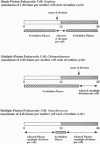Abstract
To ascertain whether the circadian oscillator in the prokaryotic cyanobacterium Synechococcus PCC 7942 regulates the timing of cell division in rapidly growing cultures, we measured the rate of cell division, DNA content, cell size, and gene expression (monitored by luminescence of the PpsbAI::luxAB reporter) in cultures that were continuously diluted to maintain an approximately equal cell density. We found that populations dividing at rates as rapid as once per 10 h manifest circadian gating of cell division, since phases in which cell division slows or stops recur with a circadian periodicity. The data clearly show that Synechococcus cells growing with doubling times that are considerably faster than once per 24 h nonetheless express robust circadian rhythms of cell division and gene expression. Apparently Synechococcus cells are able to simultaneously sustain two timing circuits that express significantly different periods.
Full text
PDF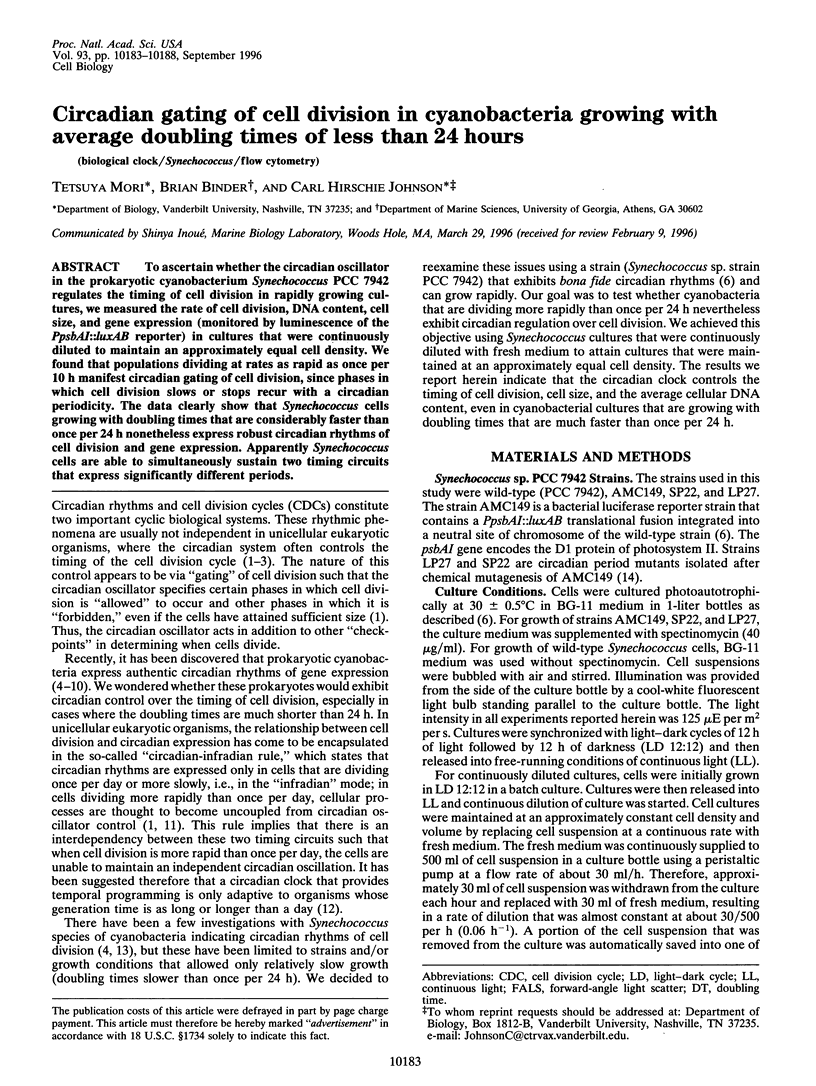
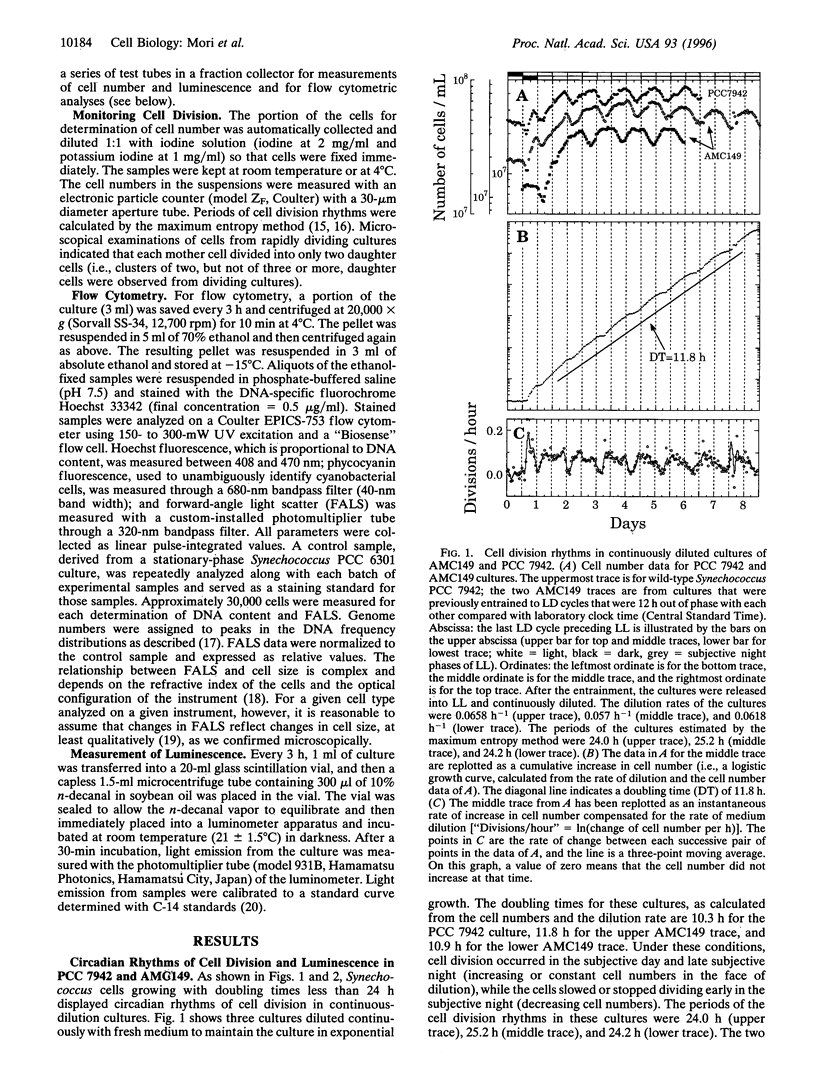
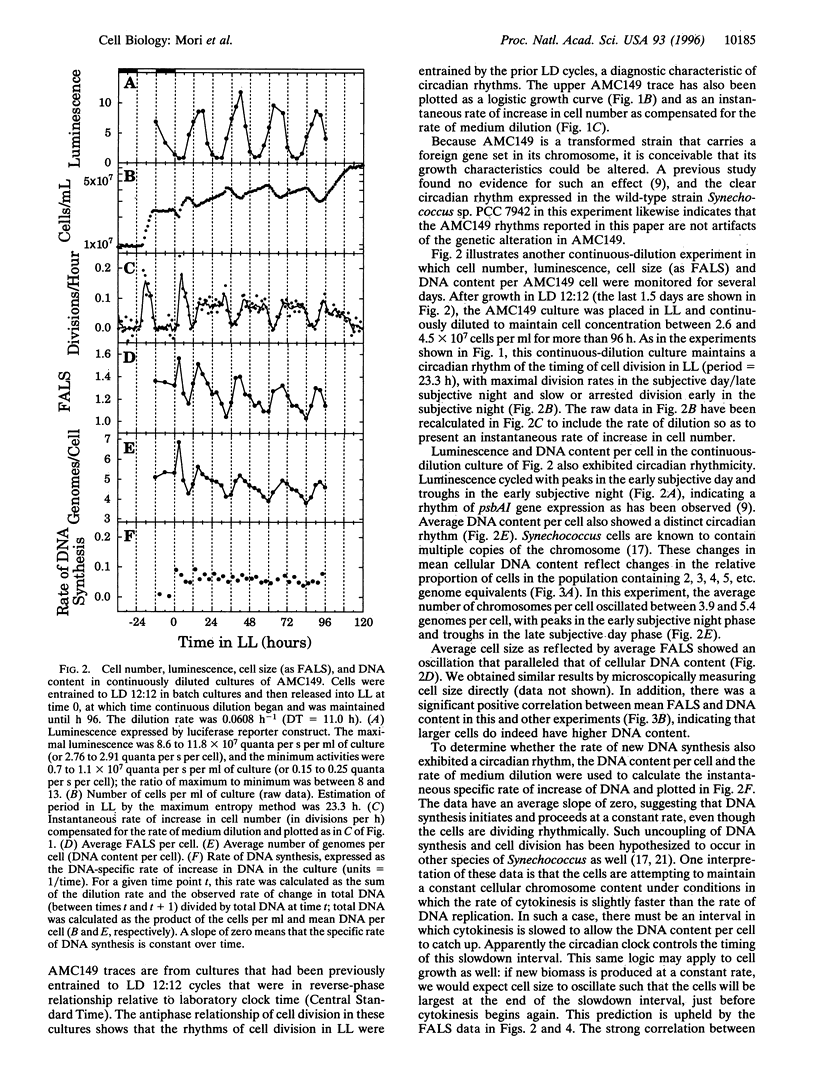
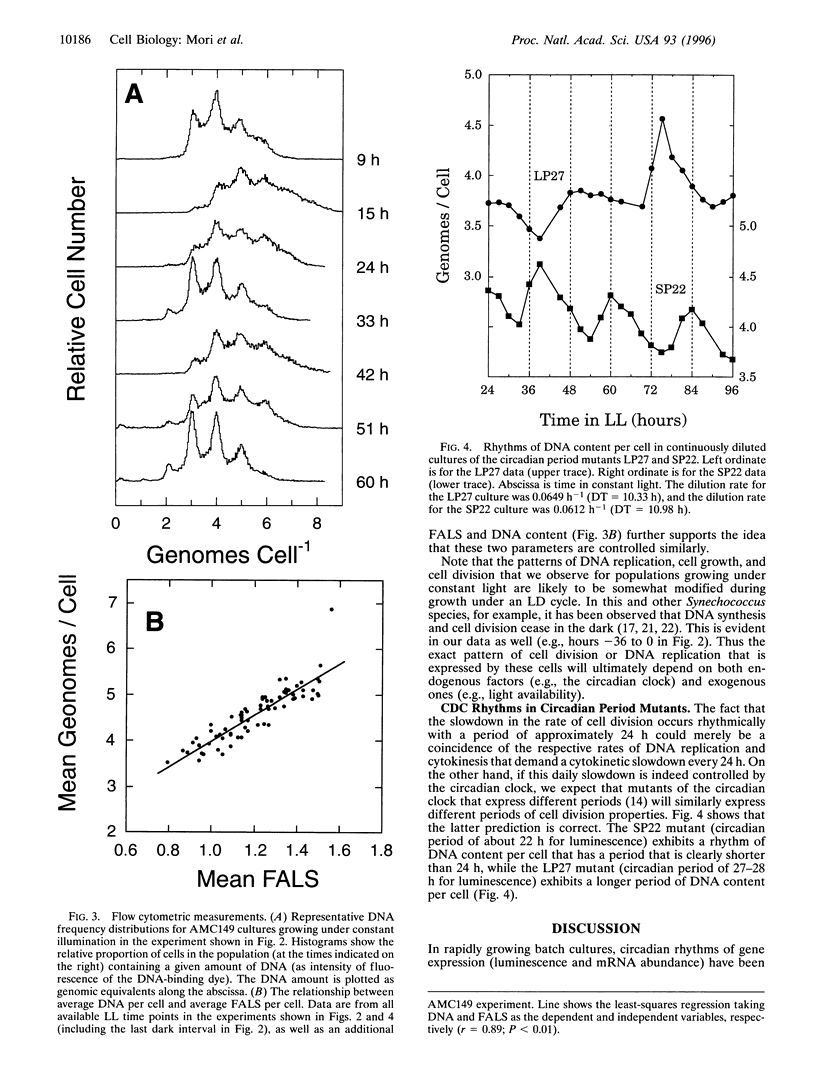

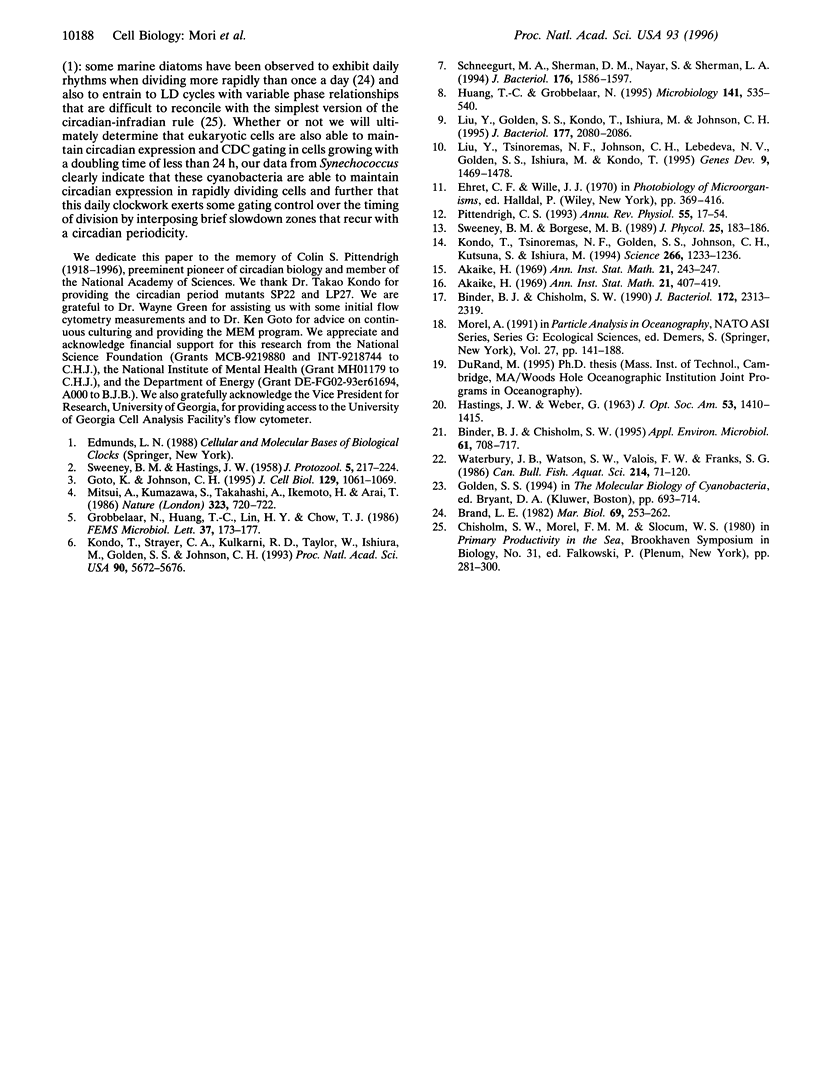
Images in this article
Selected References
These references are in PubMed. This may not be the complete list of references from this article.
- Binder B. J., Chisholm S. W. Cell Cycle Regulation in Marine Synechococcus sp. Strains. Appl Environ Microbiol. 1995 Feb;61(2):708–717. doi: 10.1128/aem.61.2.708-717.1995. [DOI] [PMC free article] [PubMed] [Google Scholar]
- Binder B. J., Chisholm S. W. Relationship between DNA cycle and growth rate in Synechococcus sp. strain PCC 6301. J Bacteriol. 1990 May;172(5):2313–2319. doi: 10.1128/jb.172.5.2313-2319.1990. [DOI] [PMC free article] [PubMed] [Google Scholar]
- Goto K., Johnson C. H. Is the cell division cycle gated by a circadian clock? The case of Chlamydomonas reinhardtii. J Cell Biol. 1995 May;129(4):1061–1069. doi: 10.1083/jcb.129.4.1061. [DOI] [PMC free article] [PubMed] [Google Scholar]
- Kondo T., Strayer C. A., Kulkarni R. D., Taylor W., Ishiura M., Golden S. S., Johnson C. H. Circadian rhythms in prokaryotes: luciferase as a reporter of circadian gene expression in cyanobacteria. Proc Natl Acad Sci U S A. 1993 Jun 15;90(12):5672–5676. doi: 10.1073/pnas.90.12.5672. [DOI] [PMC free article] [PubMed] [Google Scholar]
- Kondo T., Tsinoremas N. F., Golden S. S., Johnson C. H., Kutsuna S., Ishiura M. Circadian clock mutants of cyanobacteria. Science. 1994 Nov 18;266(5188):1233–1236. doi: 10.1126/science.7973706. [DOI] [PubMed] [Google Scholar]
- Liu Y., Golden S. S., Kondo T., Ishiura M., Johnson C. H. Bacterial luciferase as a reporter of circadian gene expression in cyanobacteria. J Bacteriol. 1995 Apr;177(8):2080–2086. doi: 10.1128/jb.177.8.2080-2086.1995. [DOI] [PMC free article] [PubMed] [Google Scholar]
- Liu Y., Tsinoremas N. F., Johnson C. H., Lebedeva N. V., Golden S. S., Ishiura M., Kondo T. Circadian orchestration of gene expression in cyanobacteria. Genes Dev. 1995 Jun 15;9(12):1469–1478. doi: 10.1101/gad.9.12.1469. [DOI] [PubMed] [Google Scholar]
- Pittendrigh C. S. Temporal organization: reflections of a Darwinian clock-watcher. Annu Rev Physiol. 1993;55:16–54. doi: 10.1146/annurev.ph.55.030193.000313. [DOI] [PubMed] [Google Scholar]
- Schneegurt M. A., Sherman D. M., Nayar S., Sherman L. A. Oscillating behavior of carbohydrate granule formation and dinitrogen fixation in the cyanobacterium Cyanothece sp. strain ATCC 51142. J Bacteriol. 1994 Mar;176(6):1586–1597. doi: 10.1128/jb.176.6.1586-1597.1994. [DOI] [PMC free article] [PubMed] [Google Scholar]




